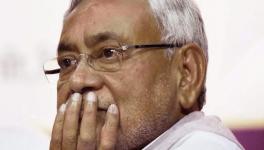As Another Hectic Election Year Approaches, Past Follies Dog BJP
Back at the beginning of the year, the Bharatiya Janata Party (BJP) and its regime seemed to be in mid-season form, despite the incompetent handling of the Covid-19 pandemic. The infection rate had slowed to a crawl, prompting the party, led by the Prime Minister, to claim a “victory” over the virus. India was being sold as a global exemplar. It helped at that point that in alliance with the Janata Dal (United) or JD-U and others, the BJP had won the Bihar Assembly elections in November 2020, in the midst of the pandemic and in the wake of the migrant crisis triggered by the regime itself.
It was a narrow win—the BJP-led National Democratic Alliance (NDA) picked up 125 seats in the 243-strong Assembly. Significantly, the BJP outperformed its ally, winning 74 seats to the JD-U’s 43, though the Rashtriya Janata Dal (RJD), leading the Opposition charge, won the most number of seats at 75. But given that this was the first outright Assembly win for the BJP/NDA since the 2019 general elections, it gave the ruling party at the Centre confidence.
To revive a cliché, a lot can change in politics in a small period of time. And it has. Within months, the BJP is looking bedraggled and desperate as it squares up for a series of consequential elections next year. Uttar Pradesh, in February-March, and Gujarat, in December, top the party’s list. Alongside Uttar Pradesh will be Goa, Manipur and Uttarakhand, all now held by the NDA; and Punjab, held by the Congress. In October, Himachal Pradesh, also held by the NDA, will hold elections. Jammu and Kashmir’s fate is up in the air.
Given this situation, the BJP is unlikely to be happy with what is happening to it. The overarching context is provided by the pandemic. Whichever way Prime Minister Narendra Modi might wriggle and however much his team of spinners might try to put a “positive” gloss on events, it is clear to a large number of people that it was the regime’s complacence and incompetence that helped the second wave of the pandemic to crash through the country.
Modi had no answers: first maintaining an impenetrable silence and then fanning the smoke and getting out the mirrors. It has fooled very few people. Alongside, the regime has completely botched the vaccination programme with frequent U-turns and lack of preparedness with regard to production, pricing and distribution. It is still dissimulating.
Small wonder that politically the BJP is facing challenges that have panicked it. Notwithstanding the party’s commanding majority in the Uttar Pradesh Assembly—a majority of over three-fourths on its own—and its performance in the 2019 general elections, when it won 62 of the state’s 80 Lok Sabha seats, the party is beset by serious problems.
The woeful handling of the pandemic, between Modi and Chief Minister Adityanath, has set the stage for serious friction. No matter how many untruths are spewed out of the fabrication factory, it is getting difficult to explain to people that the scale of the tragedy in the state is not, after all, as large as it appears. Bodies drifting down the Ganges give a lie to the attempts at undercounting infections and deaths.
The BJP’s poor performance in the Uttar Pradesh panchayat elections in May, during the peak of the pandemic, must have brought home to the party the fact that its support is shrinking. The Samajwadi Party (SP) has come out ahead in the elections. At the highest of the three tiers of the panchayati raj structure, the zila (district), the Samajwadi Party has won more than 1,000 of the 3,050 wards/seats, compared to BJP’s 900-odd.
Since the elections are not officially contested on party symbols, it is difficult to put numbers to party-wise distributions at the kshetra panchayat (block) level (75,852 wards/seats), or the gram panchayat (village) level (732,000 wards/seats). Also, given the large number of independent candidates winning wards at every level—1,000-plus in the zila tier—it takes time to form the executive bodies.
But there can be little doubt that the results do not point to a very comfortable electoral position for the BJP. It has been further undermined by the farmers’ agitation, which has passed six months, especially in western Uttar Pradesh. The fact that the Centre has made minimal attempts to negotiate is hardening the position of the peasantry as a whole.
Against this backdrop, Adityanath and Modi have been involved in a power struggle. The Centre has made indirect attempts to blame the chief minister, though both the state and central governments are to blame. Modi has tried hard to get his Man Friday in Uttar Pradesh, AK Sharma, into the state cabinet. Adityanath has successfully stonewalled that attempt. On 19 June, Sharma was picked as a vice-president of the state unit of the party, while two other people were inducted into the ministry.
Clearly, the duumvirate comprising Modi and Union Home Minister Amit Shah has not found much joy in their attempts to ‘rein in’ Adityanath, mostly because it knows that he has a powerful base and cannot be pushed around.
To these troubles has been added a tussle within one of the BJP’s NDA partners—the Lok Janshakti Party (LJP). A contest for leadership is threatening to tear it apart. The founder of the party, Ram Vilas Paswan, passed away on 8 October 2020, just before the Bihar elections. Fronted by Chirag Paswan, the LJP failed to get a single seat, but made sure that the JD-U lost in a number of constituencies by contesting every seat the latter contested. Clearly, he had the backing of the BJP, to which he helped deliver the upper hand in the Bihar alliance.
Now Ram Vilas’s brother Pasupati Paras has been elected leader of the LJP in the Lok Sabha, replacing Chirag. While that appears to be a settled fact, the attempt by the new faction to take over the party will be difficult. It appears that a majority of party members in Bihar and a majority of members of the Dalit Paswan caste, which supplies the bulk of support to the party, is with Chirag. The National Executive, notionally dissolved and reconstituted, also seems to be behind him.
Why should these shenanigans bother the BJP? After all, all LJP members, including Chirag, support the BJP in the Lok Sabha. The party has no seat in the Bihar Assembly. The problem lies outside legislative bodies. Chirag is a mercurial character and if he is backed by his party, he might have to make hard choices, which could cause a realignment of forces in Bihar. This might not fell the NDA government in the state anytime soon, but it will create a fresh churn in the heartland.
All does not appear well in Uttarakhand either, where a chief ministerial change has created more problems than it has solved. Beyond the heartland, Karnataka Chief Minister BS Yediyurappa is facing serious dissidence and the state BJP unit seems to be split into three factions. Overall, the political omens don’t seem to be propitious in the second half of the year.
Yet, for unfathomable reasons, the BJP continues to pick at its half-healed scabs in West Bengal, which, to follow the metaphor, is making the injuries worse. And tying up limited cranial space to deal with other matters. The BJP and the duumvirate is visibly rattled. And it doesn’t seem that matters are going to get better anytime soon.
The writer is an independent journalist and researcher. The views are personal.
Get the latest reports & analysis with people's perspective on Protests, movements & deep analytical videos, discussions of the current affairs in your Telegram app. Subscribe to NewsClick's Telegram channel & get Real-Time updates on stories, as they get published on our website.
























